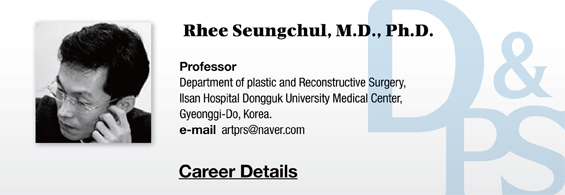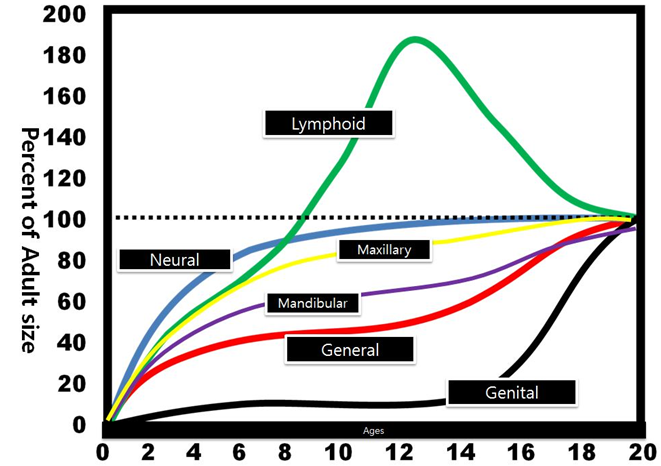
The profile of the face is an important part of facial aesthetics. It is particularly useful in analyzing the organic and harmonious relationship between the aesthetic units of the upper, mid- and lower face in cosmetic surgery and orthodontics.
Embryologically, the upper and lower jaws do not develop in tandem and this is why certain parts of the face are overdeveloped and protrude compared to other areas, creating an uneven and indented outline. This is due to the differing developmental phase of facial parts, which can be explained with Scammon’s Growth Curve(Image 1).

Image 1. Modified Scammon’s Growth Curve Graph.
In the academia, there is a disagreement over the complete maturation of the jaws which differsdepending on the race and gender. The graph in Image 1 shows that different body systems develop at different paces. The unique profile of the face in each individual forms based on the cranial, and facial bone development. The profile is a very important part of the facial attractiveness as analyzing the profile reveals much about the right degree of convexity and harmony of the forehead, nose, mouth and chin. For this reason, I first focused on Facial Profile Photo Analysis when I started developing BAPA, a facial photograme facial analysis program in 2001.
Previous studies have not standardized the landmarks of facial profile analysis. Each study suggests its own new landmarks while pointing out flaws in previous theories and anthropometric methods.
Among various facial profile analysis methods, one of the most frequently used are the H-angle method proposed by Hodawa in 1983[2] and the Z-angle method proposed by Merrified in 1996[3]. In 1980, Legan and Burstone developedthe concept “angle of convexity”to analyze convexity of soft tissues using the glabella(G), subnasale(Sn), and pogonion(Pg)[4]. Powell and Humphreystook this further and analyzed the sasofrontal, nasofacial, nasomental, and mentocervical angles[5]. Besides these well-known methods, various other anthropometric referencescan be used for facial profile analysis, which include the Steiner line, Ricketts line, and Burstone line, etc.
[Advertisement] PICOCARE - Manufacturer: WONTECH(www.wtlaser.com)
However, taking a close look at these proposals leave one with more questions than answers. For example, theBurstone line posits that a beautiful profile of the face has the upper lip 3.5mm anterior and lower lip 2.2mm anterior to the line connecting the pogonion and subnasale. However, at a close look the upper lip should lie 2.2mm±1.6mm anterior to the Burstone lineand the lower lip about3.5mm±1.4mm. These references have a very wide standard deviation, which would not be valid with 95% confidence interval. This means that statistically, theupper lip can be about0.6~3.8mm from the Burstone line. This may be too wide of a range to be used as an aesthetic reference.
Many plastic surgeons and oral and maxillofacial surgeons do use this reference in bimaxillary protrusion correction. However, they often adhere to 2.2mm and3.5mm without considering the wide standard deviation, which is too wide for the mean value to be considered an ideal degree of protrusion.
-To be continued




















